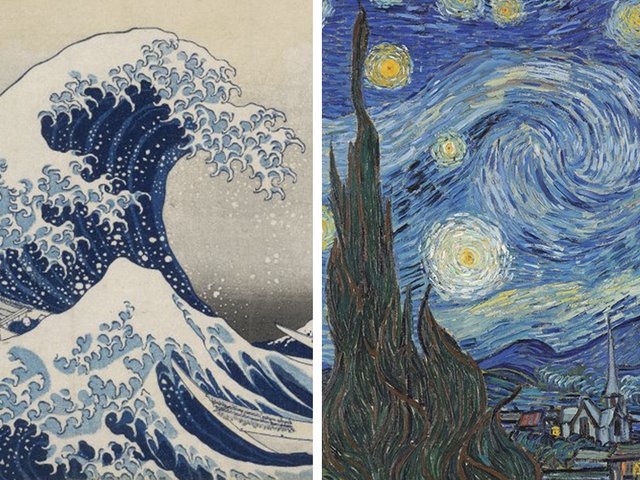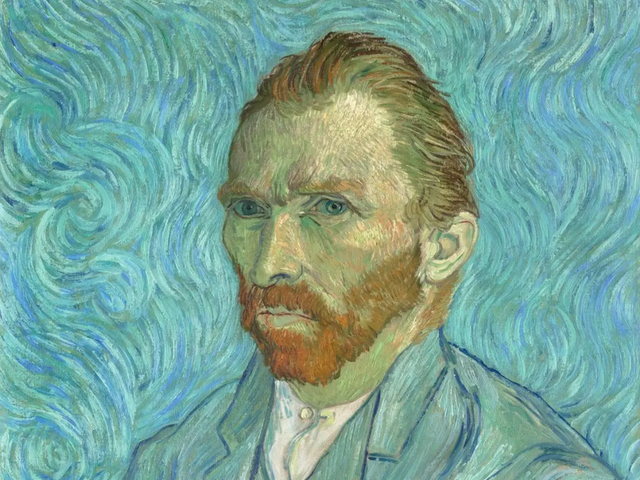The most popular painting in New York’s Metropolitan Museum of Art exhibition on Van Gogh’s Cypresses (until 27 August) is undoubtedly Starry Night. It is on loan from the Museum of Modern Art, where it is normally a major attraction, surrounded by admirers.
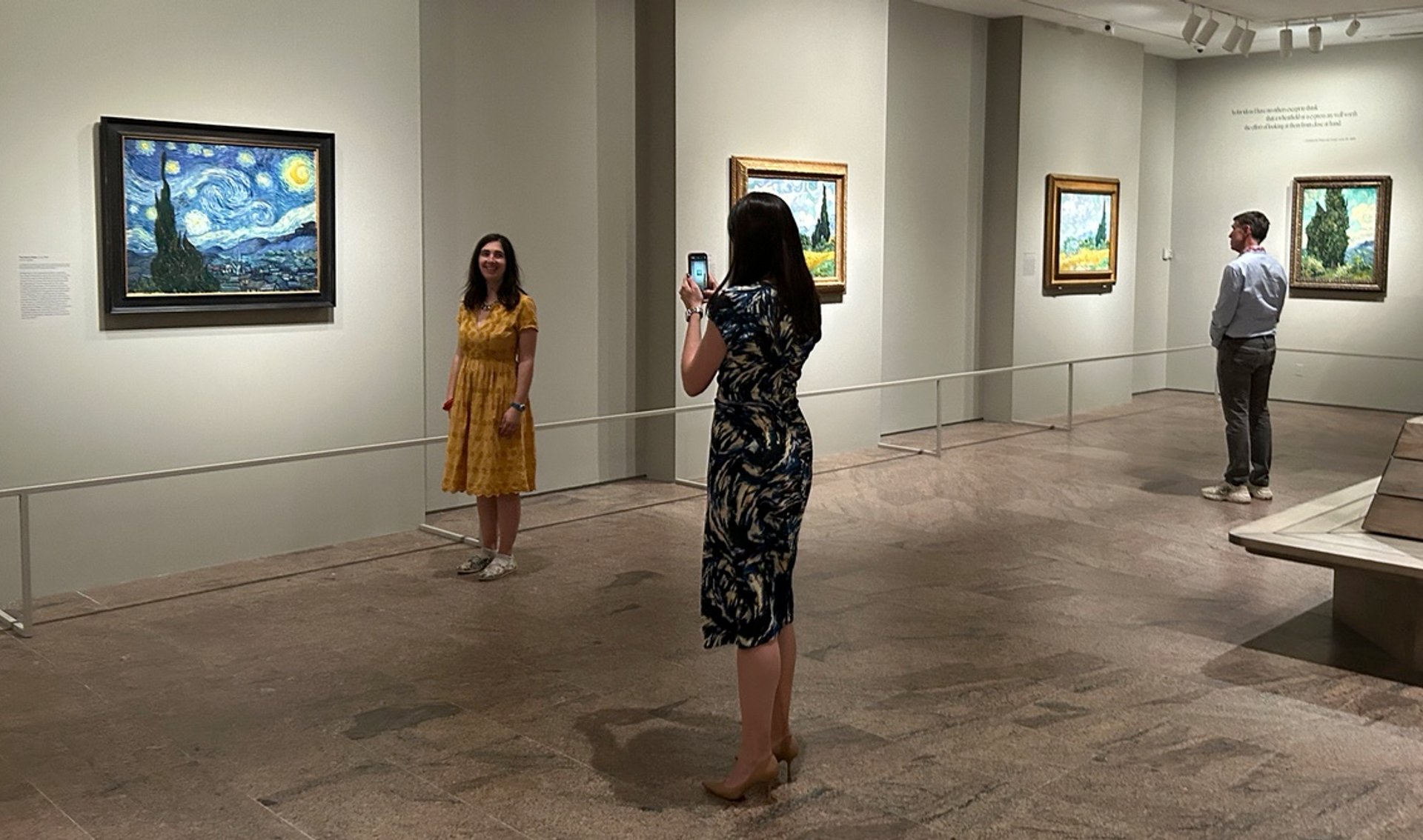
An unusually quiet moment at an exclusive preview of Van Gogh’s Cypresses at the Metropolitan Museum of Art, New York
Credit: The Art Newspaper
Van Gogh completed Starry Night in mid-June 1889, a month after arriving at the asylum on the outskirts of Saint-Rémy-de-Provence. But even with such famous paintings, there is always more to discover—so we present ten surprises.
Moonshine in the “wrong” direction
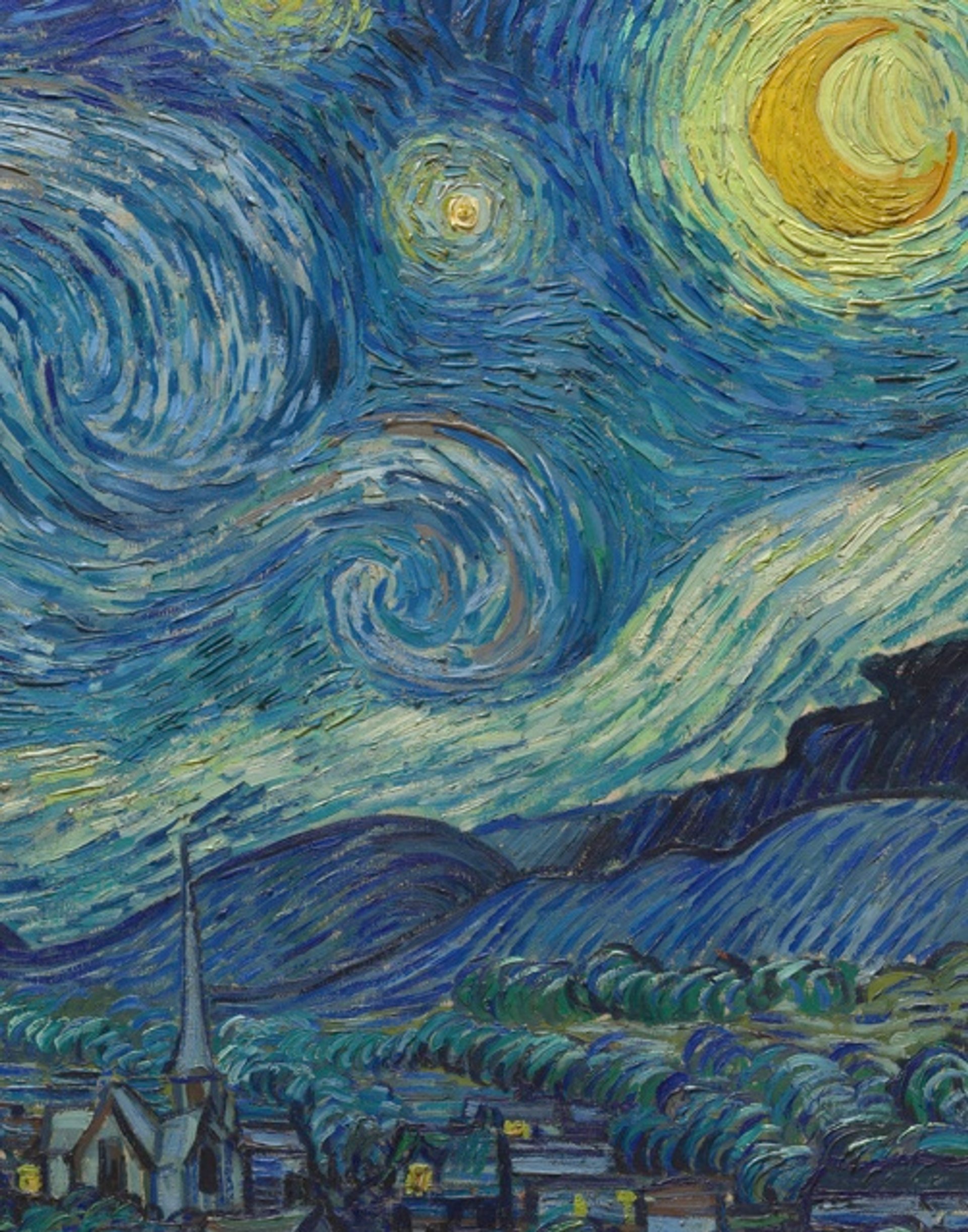
Detail of Van Gogh’s Starry Night (June 1889)
Credit: Museum of Modern Art, New York
Van Gogh illuminated the left side of the church in the landscape, whereas the main source of light would be expected to come from the crescent moon, on the right. Using artistic licence, he made bright light shine on this night-time scene from the stars. It was a painting from his imagination.
A swirling sky inspired by Hokusai
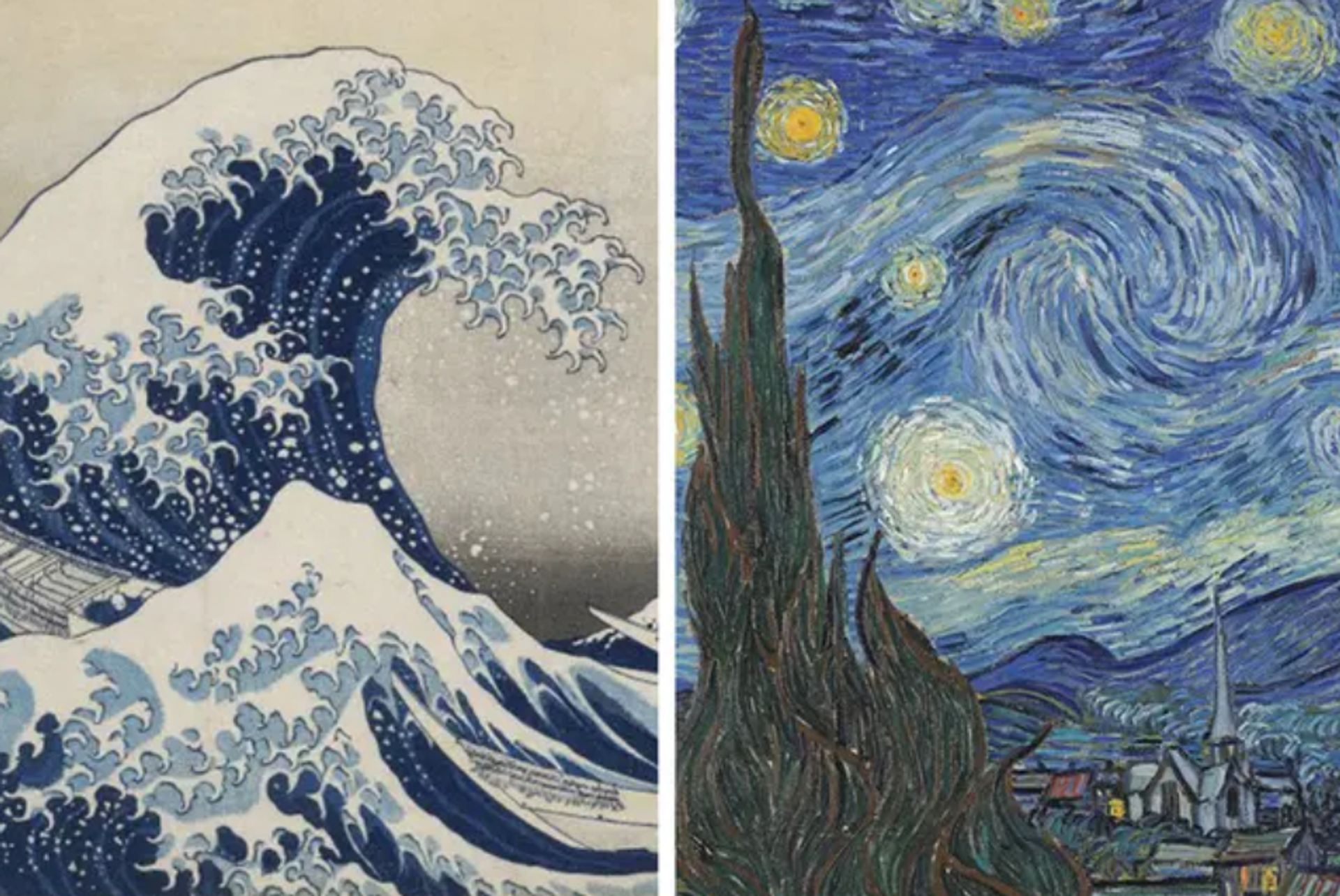
Details of Katsushika Hokusai’s The Great Wave (about 1831) and Starry Night (June 1889)
Credit for Starry Night: Museum of Modern Art, New York
Vincent was a huge admirer of The Great Wave (about 1831). He wrote to his brother Theo a few months before he painted Starry Night: Hokusai’s "waves are claws, the boat is caught in them, you can feel it”. In the Hokusai print, the wave towers over the volcanic peak of Mount Fuji, whereas in Van Gogh’s painting the swirling mass in the sky hurtles towards the more gentle slopes of Les Alpilles, the hills which lie just behind the asylum where he was then staying. These two compositions in blues share a remarkable dynamism. Van Gogh may well have been loosely inspired by Hokusai’s powerful image.
Six tubes of white paint
A week before starting Starry Night Vincent received fresh art supplies from Theo in Paris, including two large tubes of cobalt blue, one of ultramarine and six of white paint. Although he certainly did not exhaust all these on this particular picture, he used paint with almost profligate abandon, creating the thick impasto surface of his star-filled sky. The parcel with supplies from Theo also included “tobacco and chocolate”.
A weekend’s work
Van Gogh worked incredibly quickly, probably painting Starry Night over the weekend of 15-16 June. He had thought about a “starry” painting for months and would have frequently observed the Milky Way and other stars from his bedroom window, so he was ready when he took up his brushes. It was not painted at night, but in another cell in the monastery-turned-asylum which served as his studio. Once the canvas was on his easel, progress was swift. In a painting of his studio one can see what is probably Starry Night: the larger picture hanging on the right side of the wall.

Van Gogh’s Window in the Studio (September-October 1889)
Credit: Van Gogh Museum, Amsterdam (Vincent van Gogh Foundation)
The drawing you have probably never seen
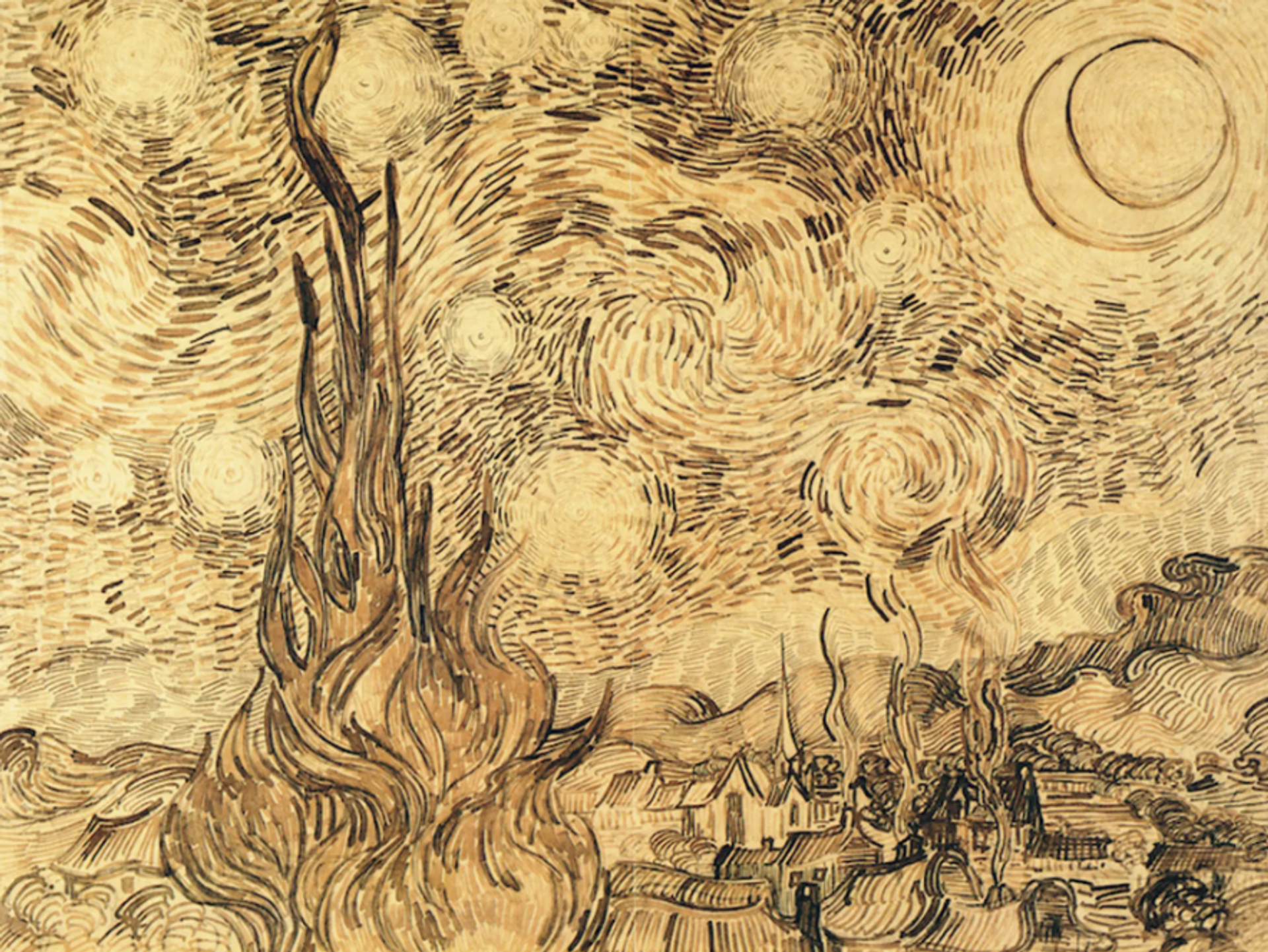
Van Gogh’s drawing of Starry Night (June 1889)
Credit: Bremen Kunsthalle (but now held in Moscow)
Van Gogh made drawn copies of ten or so paintings in the summer of 1889, including Starry Night. This drawing was donated to the Kunsthalle Bremen in 1918, but was lost during the chaos of the Second World War. It was looted at a German castle, where it had been sent for safekeeping, by a Red Army officer who took it back to the Soviet Union on a tractor. Back in 1992 I was the first outsider to see the drawing, which was then in the secret storeroom of the State Hermitage Museum in St Petersburg. The Russian government refused to restitute the looted Van Gogh and it was transferred to a ministry of culture store in Moscow, where it languishes.
Was Starry Night a failure?
Vincent had ambivalent feelings about the painting, initially referring to it as a “study”, although a few weeks later it hung in his studio. Realising that Starry Night marked something of a departure from his recent work, Vincent warned Theo that the composition might appear an “exaggeration”— not a realistic landscape. When Theo received it in Paris he responded with a few carefully chosen words of mild criticism, commenting that “the search for style takes away the real sentiment of things”. In November 1889 Vincent wrote to his artist friend Emile Bernard that the painting represented a “setback”, adding that “once again I’m allowing myself to do stars too big”.
The first Van Gogh-inspired novel
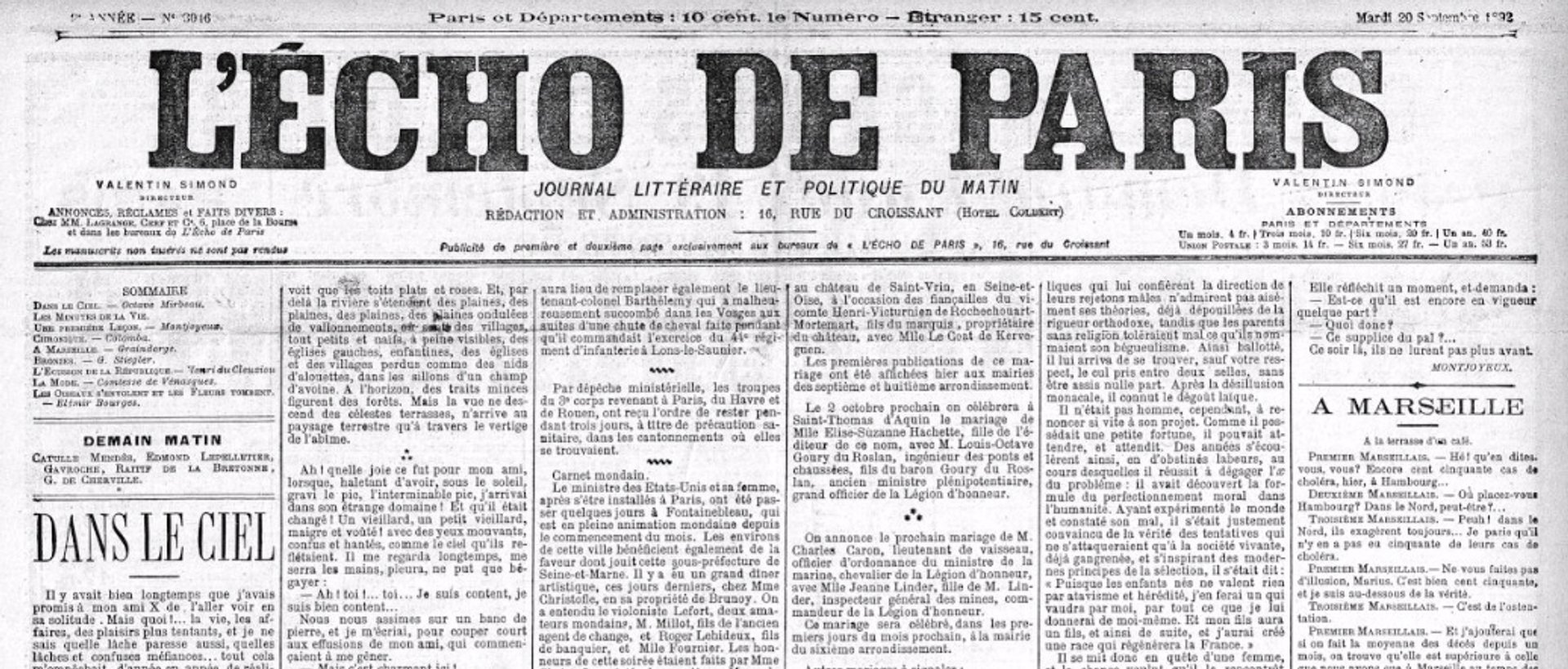
First instalment of Octave Mirbeau’s Dans le Ciel (In the Sky), L’Echo de Paris, 20 September 1892
Octave Mirbeau, a writer and critic, saw Starry Night in 1891, a year after Van Gogh’s suicide, writing about the Dutchman’s “admirable madness of skies where drunken stars spin and totter, spreading and stretching into scruffy comets’ tails”. His 1892 novel Dans le Ciel (In the Sky), published in L’Echo de Paris, centres around a tragic artist who paints trees with “their branches twisted” and landscapes “under whirling stars”. It ends with a horrific scene in which the artist saws off his right hand with a hacksaw and then dies. The novel’s main theme is the link between genius and insanity.
Hung in a conservatory
A Rotterdam woman, Georgette van Stolk, bought Starry Night in 1907, coming from Theo’s widow Jo Bonger. Van Stolk kept the painting in her conservatory, but fortunately it appears to have escaped damage from sunlight or damp. After some years she hung a protective curtain in front of it on hot summer days.
MoMA got Starry Night in a swop
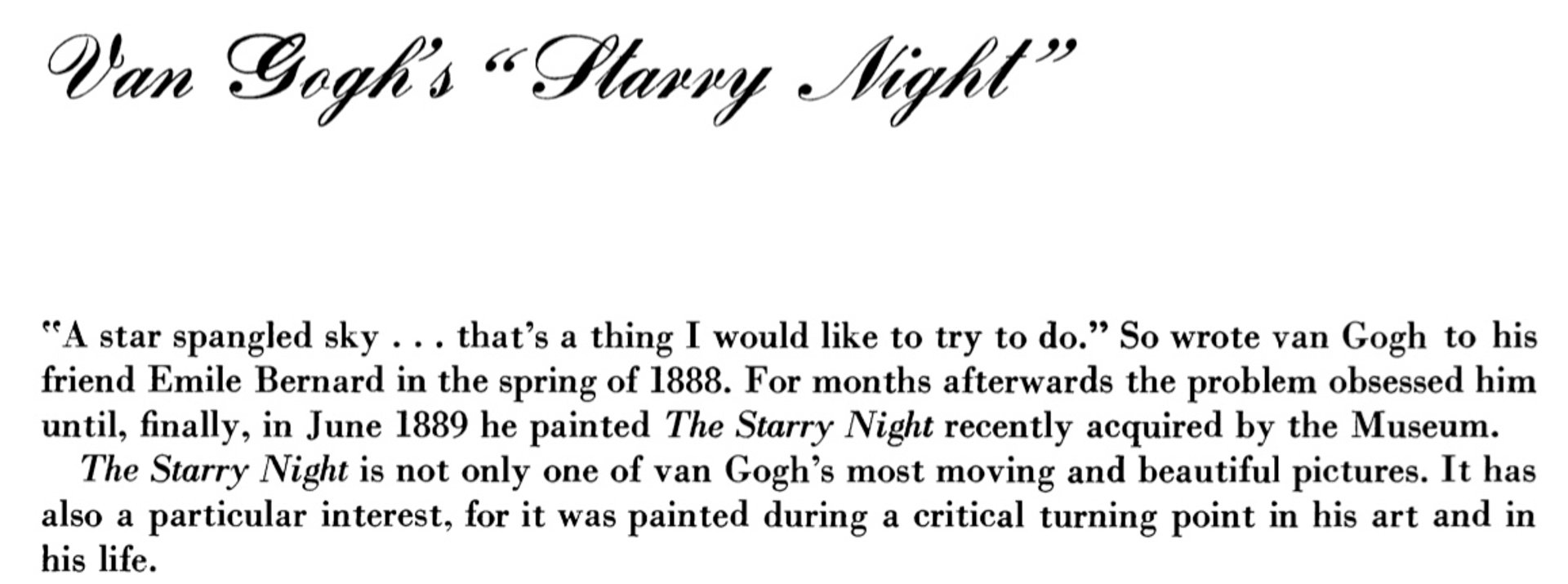
Announcement in Bulletin of the Museum of Modern Art, November 1941
Credit: Museum of Modern Art, New York
In 1941 Starry Night was acquired by the Museum of Modern Art. It is often assumed that it was bought, but it was actually an exchange. Starry Night was swapped by the dealer Paul Rosenberg for three paintings bequeathed by Lillie Bliss: Cézanne’s Portrait of Victor Chocquet in an Armchair (now Columbus Museum of Art), his Fruit and Wine (Pola Museum of Art, Kanagawa) and Henri de Toulouse-Lautrec’s May Belfort in Pink (Cleveland Museum of Art). In return Rosenberg offered Starry Night, which he had bought from Stolk, and it became the first Van Gogh to be acquired by a New York museum.
Van Gogh never called it "Starry Night"
Vincent himself never actually referred to the painting as “starry night”, variously giving it the less evocative descriptions of “starry sky”, “night study” and “night effect”. Theo called it “the village in the moonlight”, perhaps regarding it more as a landscape than a depiction of the heavens. After the artist’s death it was often known as “The Stars”. It was not until it appeared in an exhibition in Rotterdam in 1927 that the picture was given the more lyrical title “Starry Night (Sterrennacht in Dutch)".
Other Van Gogh news:
Taschen’s latest mega-tome, The History of Press Graphics 1819-1921 by Alexander Roob, includes a 60-page section on “Van Gogh’s ‘Bible for Artists’”. This reproduces images he admired from journals such as The Illustrated London News, The Graphic and Harper’s Weekly. These illustrations played a key role in inspiring the development of Van Gogh’s own work in the early years when he set out on his career. He regarded his collection of prints as “a kind of Bible for an artist”.
All Adventures with Van Gogh blogposts are © Martin Bailey






